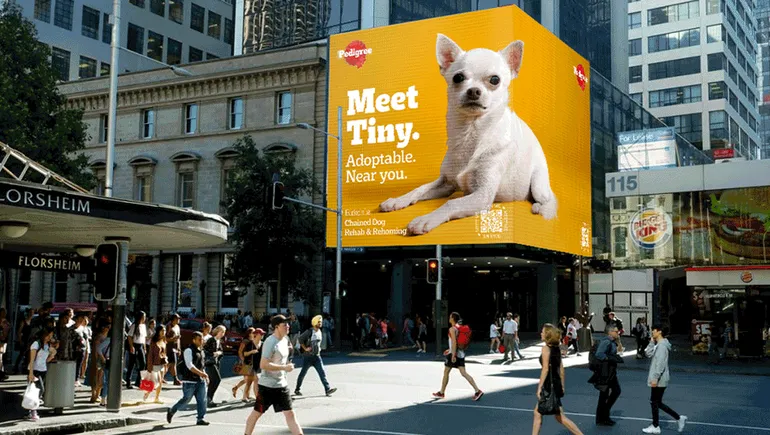
Marketers’ brand safety tactics may not be enough: Here’s what the numbers say
Brand safety is a hot topic in the marketing industry. In fact, over 80% of marketing professionals believe it’s a major concern, according to recently published findings by the Journal of Advertising Research. However, with new innovations like the metaverse raising fresh concerns for marketers and more mature platforms like X, formerly Twitter, falling into controversy, brand safety has become an even more debated topic. Plus, according to the Journal of Advertising Research’s findings, consumers are just as aware, even reporting that consuming ads near content considered even mildly negative could turn them off a brand.
Further, brand safety has become such a concern for marketers that many are willing to pay a premium for safe placement. Among senior executives, 57.78% say they would pay a premium for safe placement, and 46.84% of managers and directors say the same.
“Everyone’s concerned about this, but it does seem like executives are more concerned about this than the managers or the individuals that are the ones that actually have to implement these practices,” said Ross Johnson, a professor at the University of North Texas and lead author on the report.
To fully understand the impact brand safety has on both the corporate and consumer levels, researchers performed two separate investigations. To understand brand safety from the point of view of corporations, 223 executives from brands with at least $10 million in annual advertising spend were recruited. To get a full picture of how consumers feel about advertisements that appear alongside negative content, researchers showed 311 participants two news stories involving children, one positive and one negative. A midroll advertisement was played during both, and consumers were asked their opinion on the marketer after.
The little evils
While both senior executives and managers agree that brand safety risks can negatively impact consumers’ opinion of the brand, the levels of worry between the two groups vary. On a five-point scale, with one being the least concern and five being of the highest concern, nudity or child abuse was ranked the highest for both senior executives (4.36) and mangers and directors (4.04). However, ranking second for senior executives was illegal drugs at 4.22; the ranking for managers in this category was 3.83. Extremist hate or terrorism speech was a number two concern for managers, with a rating of 4.01; executives rated this as a 4.15.
Marketers are right to be concerned, according to Johnson. During the experiment, where participants were shown a positive news story (children having a friendly interaction with a police officer) or a negative news story (a poor service experience between children and a dentist), paired with a 15-second midroll ad for McDonald’s, the news story greatly impacted how people felt about the brand.
“If your ad is being displayed in these negative environments, it basically erodes attitudinal loyalty, erodes brand equity, and it decreases people’s willingness to pay for that,” said Johnson.
As pointed out by Johnson, the news stories were fairly mild compared to the top advertising placement concerns listed by marketers. However, it was still enough to produce a negative reaction on the part of the consumer. There also wasn’t much of a connection between the news stories and McDonalds, further highlighting the importance of placement.
Which begs the question, are marketers worried about the wrong thing? Of course, no marketer wants their content appearing alongside truly heinous things, such as child abuse or terrorism. But is not enough attention being paid to little evils? How much effort should, or can, be put into preventing your content from appearing alongside news stories about a poor dentist experience?
It’s also worth noting that what is considered negative content could vary from brand to brand, Johnson suggested. For instance, a fast food company like Burger King would probably not want their ad showing up in a news story about how fast food can lead to diabetes. However, a company such as Barnes & Noble would probably be less concerned about it.
“But we did find that across industries, people are concerned about this,” Johnson said.
Putting out the (wrong) fire
This leads to the important consideration of how to best protect your brand from negative environments. However, internet advertising is so vast and complex, manually checking every single placement would most likely be impossible if a brand was using programmatic advertising.
Of course, a brand could choose to not advertise on a platform at all. If a marketer thinks the risks of YouTube outweigh the benefits, they can simply not advertise there. This is something that has been happening more and more in real time as X continues to scare off advertisers under Elon Musk’s leadership. But could removing a brand from such an impactful platform do even more damage than the content it may appear beside?
Instead of leaving entirely, many brands opt for the frequently employed strategy of keyword blocking. However, according to Johnson, this strategy isn’t always optimal.
“What keyword blocking is saying is we’re not going to display our ads on a website [or] on an article that uses the word ‘nudity,’ or uses the word ‘sex.’ But those keywords are so frequently coming up, that actually some content that’s not that conflicting is also flagged as not being allowed to be advertised next to it,” said Johnson.
AI could be a potential solution, especially if marketers are willing to pay a premium for an effective brand safety platform. But the technology is still a long way off and has already shown significant problems in the way of accuracy. Until the technology improves, it’s likely that marketers have to continue the balancing act.
“Are you almost being too aggressive and then giving up those potential exposures as well?” said Johnson. “Frankly, I think keyword blocking can get better… AI is going to present potentially more issues with this. But I think it also could be a solution toward this as well.”





